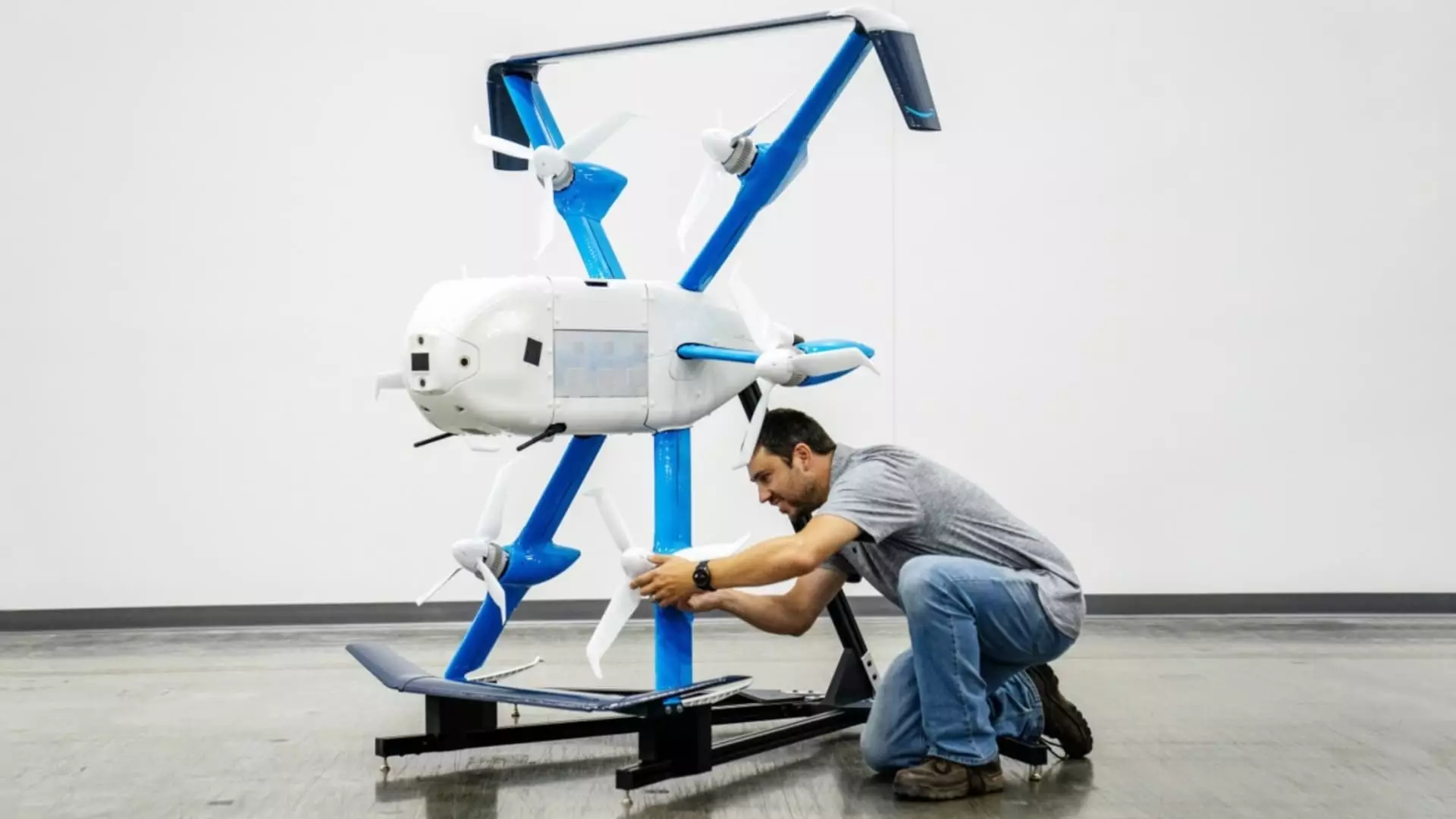In a bold stride towards reshaping the delivery landscape, Amazon has gained regulatory clearance to deploy its latest drone model, the MK30. This development brings renewed focus to the ambitious Prime Air program, which aims to revolutionize how packages are delivered. Unveiled in late 2022, the MK30 is touted as a quieter, more efficient alternative to its predecessors, capable of operating in light rain and boasting double the range. However, even with these advancements, the path ahead remains fraught with challenges.
The regulatory approval from the Federal Aviation Administration (FAA) marks a crucial milestone for Amazon. With this newfound permission, the company can now perform drone deliveries over extended distances and beyond the visual line of sight of the pilots—a significant feat in the world of drone operations. While this broadens their operational horizon, it’s essential to recognize the historical context of these approvals. Previous waivers were often limited to specific regions, as seen in College Station, Texas, where Amazon first tested its drone capabilities.
Commencing drone deliveries near Phoenix, Arizona, signifies Amazon’s commitment to integrating this technology into its larger logistics network. The location is strategic, facilitating operations close to one of Amazon’s many warehouses, and hints at a more synchronized approach to delivery efficiency.
Despite the excitement surrounding this launch, the journey toward effective drone delivery has not been smooth for Amazon. CEO Andy Jassy’s tenure has seen the company grappling with cost-cutting measures, resulting in layoffs that have impacted the Prime Air division specifically. Coupled with the challenges of missing deadlines and regulatory hurdles, Amazon’s drone program has faced criticism regarding its pace of innovation and execution. The once ambitious predictions made by Jeff Bezos over a decade ago now seem overly optimistic, as the on-ground reality reflects a more complex scenario.
The departure of key executives, including Amazon’s primary liaison with the FAA, has raised eyebrows regarding the internal cohesion and leadership stability within the drone division. However, the appointment of David Carbon, a seasoned former Boeing executive, to steer Prime Air injects a fresh perspective and potential expertise into reshaping the program’s future.
Another dimension complicating the rollout of Amazon’s drone deliveries is the pushback from residents in test locations like College Station. Noise complaints have emerged as a significant concern, prompting the city’s leadership to engage in dialogue with the FAA and Amazon. In response to community grievances, Amazon has committed to finding alternative drone delivery sites by late 2025. This dynamic illustrates the often-overlooked aspect of emerging technologies: the need to harmonize innovation with public acceptance and local governance.
Amazon is not alone in this endeavor; it faces stiff competition from a plethora of companies vying for dominance in the drone delivery sector. Major players like Wing (associated with Alphabet), UPS, and Walmart pose substantial competitive threats, while startups such as Zipline and Matternet are also making significant strides. This competitive environment underscores the urgency for Amazon to refine its strategies and operations to maintain market relevance.
As Amazon continues to push forward with its MK30 drone and the Prime Air program, several factors will determine its success. Enhancing public relations to address community concerns, optimizing delivery routes to ensure efficiency, and navigating the complex regulatory landscape will be critical components of this journey. The evolution of drone technology holds promise, but transforming it into a practical, everyday solution for consumers requires balanced innovation and strategic outreach.
While the recent regulatory approval heralds a significant step for Amazon’s aerial ambitions, the reality of execution, community relationship management, and competition looms large. The true test will be whether the MK30 can transition from the drawing board into a reliable delivery vehicle that meets customer expectations and quiets local resistance, paving the way for a new era in logistics.

